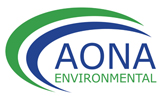Our Clients Say
“Mervyn Keegan and the team at AONA Environmental Consulting has assisted us throughout the development of our projects at Evermore Renewable Energy Ltd. from planning through to operational phase since our inception in 2008. He has provided us with excellent professional guidance in the development of our flagship projects to date. These include the operational Evermore Energy Ltd. 17 MW wood-fired CHP plant at Derry Port and the proposed Belfast Power Ltd 480 MW Combined Cycle Gas Turbine (CCGT) in Belfast Harbour Estate, Belfast, Northern Ireland. AONA Environmentals capabilities range from environmental to occupational health and safety consultancy. We have always found Mervyn to be personable and professional in all dealings with our project partners and relevant authorities when working on our behalf”.
“We have worked with Mervyn Keegan on a number of large-scale development proposals and found his contribution to be invaluable. His ability to provide robust reports within a timely manner greatly assists in delivering high quality planning applications. AONA Environmental remains our number one point of contact when we need specialist environmental advice for major development proposals”.
Gravis Planning is a market-leading town planning and engagement consultancy active throughout the UK and Ireland.
“Assessing the potential noise impact from a single wind turbine is a key consideration during the journey of achieving planning permission. Mervyn Keegan is a proactive, meticulous and efficient noise consultant that produces high quality noise impact assessments to the requirements of the local Environmental Health Departments. His expertise was key to the success of Simple Power achieving planning permission for numerous single wind turbine projects through Northern Ireland.”
“Quarryplan has consistently worked with Mervyn Keegan on several projects over the past 15 years. The noise and air quality assessment services provided by Mervyn and his team have helped to successfully deliver numerous mineral and wind energy projects for our clients in the Republic of Ireland, Northern Ireland and across the UK. They provide competent professional assessments and reports, and what’s more they provide them on time. Mervyn also provides highly regarded and confident affidavits and expert witness”.
“The AONA team are great at what they do, efficient and pro-active. Merv and the team are like an extension of our own team providing support and expertise when needed to consistently high standards which is why we don’t go anywhere else. Would we recommend them? Very much so”.
“AONA Environmental Consulting have completed several noise and air quality impact assessments for water services projects managed by Nicholas O’Dwyer Limited. The assessments were undertaken in a professional manner and addressed the requirements of the scope. AONA Environmental also demonstrated flexibility and adaptability to amendments in the scope and in the delivery of the services”.

